

Touring Fuji Five Lakes
|
Everyone knows the symbolic Mount Fuji of Japan, but how well do you know about the five lakes around the foot of the mountain in Yamanashi Prefecture? The Fuji Five Lakes are namely Kawaguchiko, Yamanakako, Saiko, Shojiko and Motosuko, and they were formed hundreds of years ago when the lava flow from Mount Fuji’s multiple eruptions spread across the area, and hence damming up the rivers. It is curious to note that Saiko, Shojiko and Motosuko are actually connected to each other by underground waterways.
The most well-known of the five lakes is Kawaguchiko. It is also the most accessible from Tokyo, and has many accommodation facilities and sightseeing attractions, be it the Itchiku Kubota Art Museum, Kawaguchiko Music Forest, or aquatic activities such as boating, windsurfing or waterskiing. Besides that, it is the only lake with an island. Naturally, visitors can enjoy a stunning view of Mount Fuji, and it is in fact, the view that appears in Basho Matsuo’s haiku and Hokusai’s Thirty-six Views of Mount Fuji. Yamanakako is the largest of the five lakes, and incidentally also the third highest lake in Japan at 3,217 feet above sea level. It is a popular spot for outdoor activities such as camping, yachting, smelt fishing and tennis. Many school clubs also visit this lake as a training site due to its plentiful amenities. Photo enthusiasts may be glad to hear that this is an ideal place for capturing Diamond Fuji from October to February, when the sun sets right at the tip of the mountain. If you are lucky enough to see this breathtaking scene perfectly reflected in the lake, you would witness Double Diamond Fuji. On the contrary, Saiko is a quieter lake surrounded by the dense, mysterious forest, Aokigahara Jukai. You can find a lava cave, called Saiko Bat Cave, which is a designated national natural monument, and remains warm even in winter. On the other extreme, there is the Narusawa Ice Cave, where you can see icicles even in summer. While Shojiko is the smallest of the five lakes, people have visited this spot for many years, with hotels being built around the area from as long ago as the Meiji period. Remnants of lava flow can still be observed in this lake. As for unique views, one can enjoy Kodaki Fuji, in which Mount Fuji appears to be embracing the smaller mountain, Oomuroyama. Last but not least is Motosuko, the deepest of the five lakes and thus the only lake which does not freeze in winter. It is known for its extremely clear waters, as well as its autumn foliage. The view of Mount Fuji from the Nakanokura Pass observatory is the same one that appears on the back of the previous 1,000 yen note, inspired by a photography taken by Koya Okada. Within the Fuji Five Lakes area is also Oshino Hakkai, eight ponds in the Oshino area that are national natural treasures of Japan. The ponds are filled with snow water that has flowed down from Mount Fuji, and naturally filtered to become clear and fresh spring water. As such, soba made with these clear waters is popular for its delicious taste. Yamanashi Prefecture is truly blessed by nature since ancient times. Besides appreciating the majestic Mount Fuji, why not also take the time to enjoy the surrounding areas of Fuji Five Lakes? |
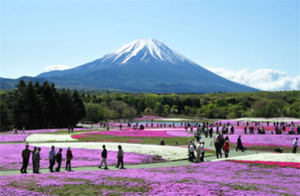 © Web Japan 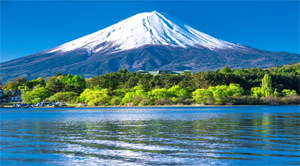 Kawaguchiko © Japan Up Close 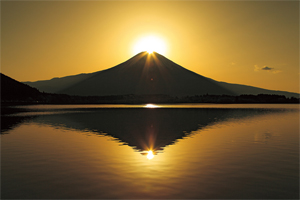 Diamond Fuji © Aflo 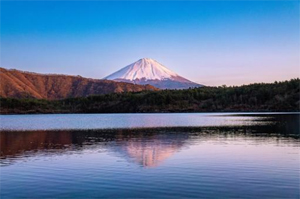 Saiko © photoAC 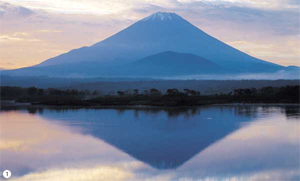 Shojiko © Rocky Tanaka 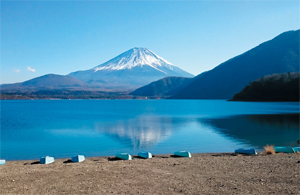 Motosuko © Mt. Fuji Yamanashi Film Commission |
Resources
|
“Endless recreation and cultural pleasures at Mt. Fuji’s five famous lakes”. 2024. Japan National Tourism Organization. Accessed 16 August. https://www.japan.travel/en/destinations/tokai/yamanashi/fuji-five-lakes/. “Fuji Five Lakes”. 2024. japan-guide.com. Accessed 16 August. https://www.japan-guide.com/e/e6904.html. “[Yamanashi] What are the Fuji Five Lakes? What are the characteristics of each of the Fuji Five Lakes? What kind of place?”. 2023. MATCHA. https://matcha-jp.com/en/12168. “The Fuji Five Lakes Region (Fujigoko)”. 2001. Yamanashi Prefecture Tourist Association. https://www.yamanashi-kankou.jp/english/english003.html. |
|
Japan Creative Centre 4 Nassim Road, Singapore 258372 +65 6737 0434 / jcc@sn.mofa.go.jp https://www.sg.emb-japan.go.jp/JCC/ Nearest parking at Orchard Hotel & Delphi Orchard |
 |